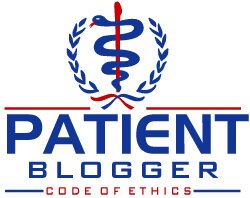
This is a picture of a Guinea Worm emerging from the skin of an unfortunate sufferer.
I decided for my second post to talk about something you're not likely to get here in the Western Hemisphere, so I chose Guinea Worm Disease, also known as Dracunculiasis, since it was one of the first diseases I read about simply out of curiosity rather than trying to figure out what my own symptoms were.
I had read about the Guinea Worm in my old Merck Manual and thought it sounded hideous. Having just looked it up on the Internet to find out if any new treatments had been developed since my original reading, I was sorry to learn that the treatment has remained the same: slow extraction of the worm by gradual traction. This is a picture of the process.
What is Guinea Worm Disease?
It is an infection caused by the parasite Dracunculus medinensis. It is spread through unclean drinking water, and as such, is totally preventable.
The way it works is, the worms emerge from the skin of an infected person when they (the worms, that is) are mature. If the person is entering a pond or stream that is a source of drinking water, the worm can then release larvae into the water, which are then eaten by "water fleas;" there they develop into the next, infective, stage, within 10-14 days.
People become infected by drinking water with the fleas in it, thus starting the whole process over again in a vicious cycle.
Once a person ingests the fleas, the Guinea Worm larvae are released from the fleas as the fleas are digested, and these larvae cleverly find their way to the small intestine, where they are able to go through the wall and into the inside of the body cavity.
Once there, they happily ensconce themselves for the next year or so. The female worm grows to a size of two to three feet in length, about the width of a strand of spaghetti.
Once she is fully mature, the female worm migrates to a site where she can bore her way out of the body, usually the legs. A blister then develops where she is trying to get out, and after 2-3 days it will rupture. At any point after that if the worm is exposed to water, she will release larvae.
What are the symptoms?
There are usually no symptoms until about a year after a person becomes infected. A few days to a few hours before the worm emerges, the person may develop a fever, swelling and pain in the area. Although the worm mostly affects the legs, it can appear anywhere else on the body.
Patients often develop secondary bacterial infections from the worm, and this can cause disabling complications, which can seriously disrupt their lives.
How is it treated?
There is only one treatment for Guinea Worm. Once the worm emerges from the wound, it must be pulled out a little at a time each day and wrapped around a small stick. This can take weeks or even months.
The only other way to get rid of this worm is to remove it surgically before the ulcer forms.
Aspirin or ibuprofen can ease the pain and antibiotic ointment can prevent infection.
Will you get it?
Probably not. This disease is endemic in Africa, mostly in the Sudan, where civil war is making eradication difficult. Asia is now free of the disease, as are several African countries.
Since 1986, a number of health organizations have been working to eradicate the disease. The annual number of cases has declined in that time from 3.2 million to about 32,000 in 2003, which is very good news indeed.
The disease is only common in remote rural villages and in areas visited by nomadic groups. Anyone who drinks standing pond water contaminated by people with Guinea Worm Disease is at risk for infection.
Preventing it is a matter of educating the people to drink only water from underground sources that are free from contamination, to prevent people with Guinea Worm Disease from entering ponds and other bodies of water used for drinking water, and to filter any unsafe drinking water with a cloth, to remove the fleas, before drinking. Unsafe water can also be treated with an approved larvicide.
The source of this information was the Center for Disease Control's (CDC)website.







3 comments:
I was drinking a glass of water as I read this.....slightly disconcerting!...but I'm sure we wouldn't have them in England...would we??
Rx
No worries, Ruth! You have clean drinking water in England!
I actually was going to be a bit more flippant when I wrote about the Guinea worm (such as saying that you'll probably never be able to eat a plate of spaghetti again after reading about it, given the similarities...) but when I read more about it and realized how life-disrupting or even life-threatening this has been for the people affected, I couldn't go there. I was glad to read that they have almost eradicated it in many countries and that the incidence has gone down so much.
Happy new year.
nice link. I like it so much. this link is very useful to every body. very nice posting
Bathmate
Post a Comment